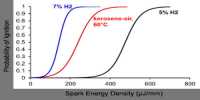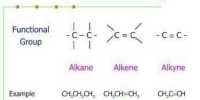When it was first proposed to construct ‘dust-free roads’ by using tar instead of the inorganic materials used previously there was concern that the vapour from the tar would harm vegetation. Such fears were later shown to be without foundation provided that tars selected for such use did not in pre-use testing start to boil below 140°C, and there was the obvious health advantage that persons were no longer inhaling fine dust from the roads or experiencing eye irritation from it.
Generic value for the vapour pressure of coal tar pitch of < 0.01 kPa. In the boxed area below is an estimate of what the odour threshold of the materials in the pitch vapour would have to be if the vapour were to be detectable by the sense of smell.
Considering air at room temperature and 1 bar pressure:
PaV = na RT
where subscript ‘a’ denotes air. For the vapour, using subscript ‘v’:
Pv V = nv RT
Many pure organic substances have odour thresholds much lower than this; that for benzene is 12 p.p.m. One would therefore expect that a coal tar pitch having the vapour pressure in the inequality in the previous paragraph would be detectable by the olfactory sense, and that inhalation in an unventilated area would be harmful. The vapour pressure for newly manufactured pitch will of course drop as the pitch loses its lightest constituents on standing.













